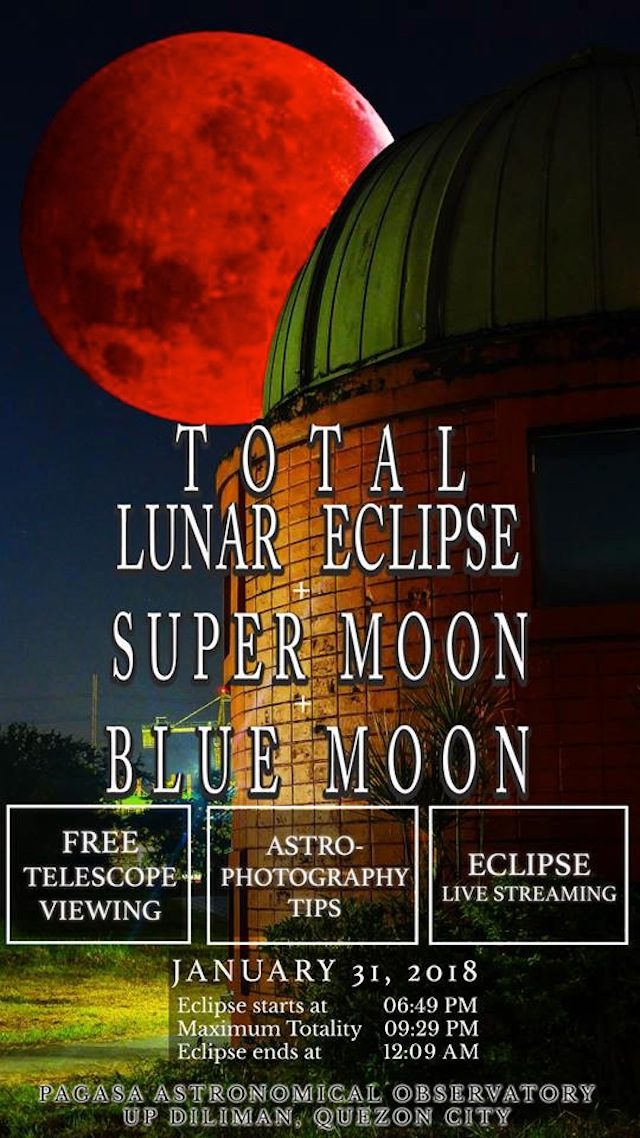MANILA – The Philippine Atmospheric, Geophysical and Astronomical Services Administration (PAGASA) is inviting the public to observe a “triple treat astronomical event” on Wednesday, January 31, at the PAGASA Astronomical Observatory in the University of the Philippines Diliman.
A total lunar eclipse, a Super Moon, and a Blue Moon will all occur at the same time, and PAGASA will offer free telescope viewing, astro-photography tips, and a livestream of the eclipse which starts at 6:49 p.m. and ends at 12:09 a.m. on Thursday.
Lunar eclipses are safe to watch, and observers do not have to use any protective filters for the eyes, PAGASA said in an advisory. It also recommended that they bring binoculars or a telescope to magnify the view and make the red coloration of the Moon brighter.
PAGASA detailed the major phases of the lunar eclipse as such:
6:49 p.m. on January 31 – Penumbral eclipse begins
7:48 p.m. – Partial eclipse begins
9:29 p.m. – Greatest eclipse occurs
11:11 p.m. – Partial eclipse ends
12:09 a.m. on February 1 – Penumbral eclipse ends
The Super Moon, which refers to a new moon or full moon that has come within about 361,000 kilometers of the Earth, will be 360,199 kilometers away at 9:27 p.m., PAGASA said.
A Blue Moon event means that two full moons occurred in the same month. The first full moon occurred on January 2, to be followed by the second full moon on January 31 at 9:27 p.m.
PAGASA clarified that this does not necessarily mean the Moon will be blue in color, although the Moon may appear to have a tinge of blue “in certain atmospheric conditions, (such as) when there are volcanic eruptions or when exceptionally large fires leave particles in the atmosphere.”










